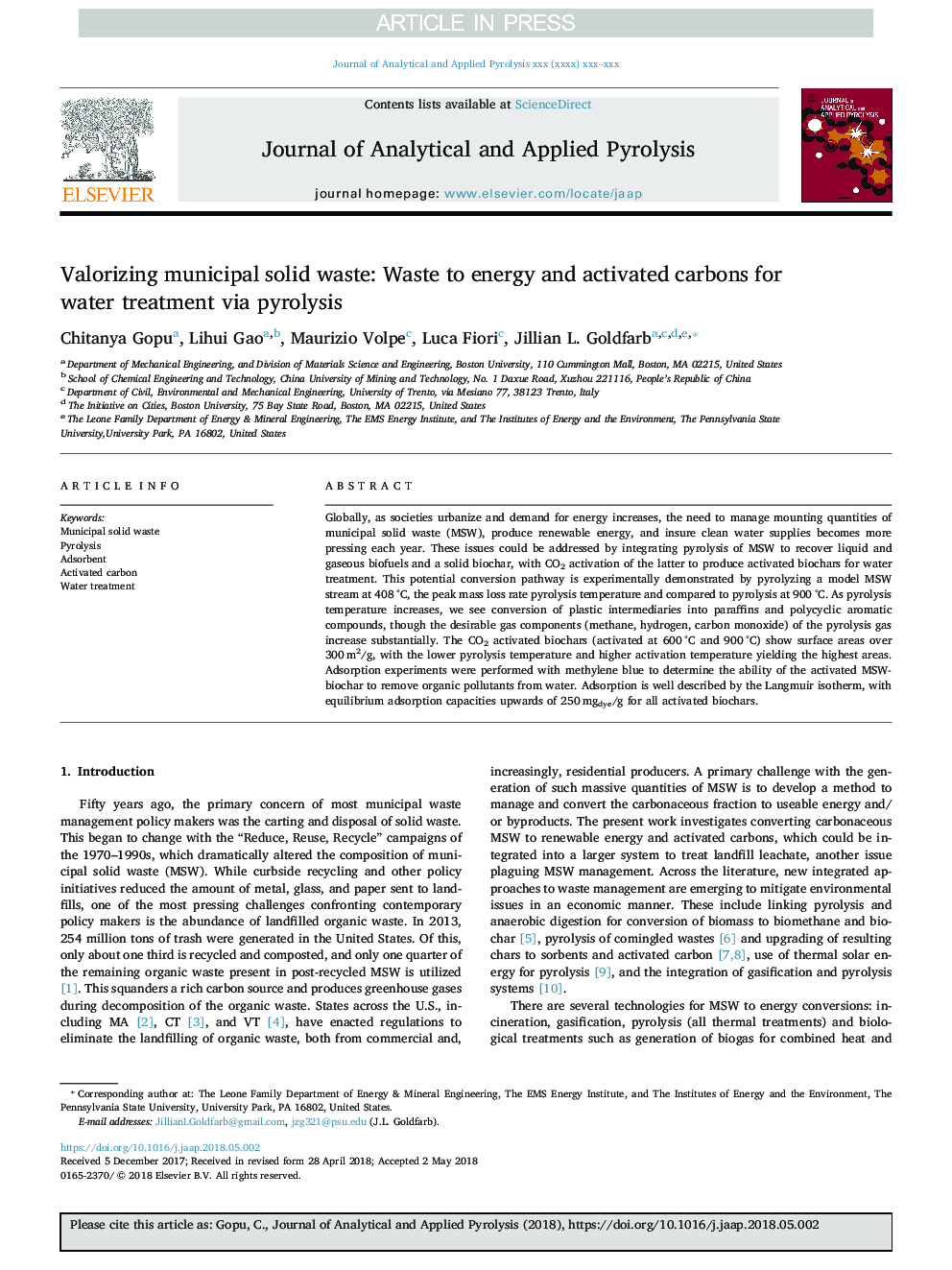| Article ID | Journal | Published Year | Pages | File Type |
|---|---|---|---|---|
| 7606235 | Journal of Analytical and Applied Pyrolysis | 2018 | 11 Pages |
Abstract
Globally, as societies urbanize and demand for energy increases, the need to manage mounting quantities of municipal solid waste (MSW), produce renewable energy, and insure clean water supplies becomes more pressing each year. These issues could be addressed by integrating pyrolysis of MSW to recover liquid and gaseous biofuels and a solid biochar, with CO2 activation of the latter to produce activated biochars for water treatment. This potential conversion pathway is experimentally demonstrated by pyrolyzing a model MSW stream at 408â¯Â°C, the peak mass loss rate pyrolysis temperature and compared to pyrolysis at 900â¯Â°C. As pyrolysis temperature increases, we see conversion of plastic intermediaries into paraffins and polycyclic aromatic compounds, though the desirable gas components (methane, hydrogen, carbon monoxide) of the pyrolysis gas increase substantially. The CO2 activated biochars (activated at 600â¯Â°C and 900â¯Â°C) show surface areas over 300â¯m2/g, with the lower pyrolysis temperature and higher activation temperature yielding the highest areas. Adsorption experiments were performed with methylene blue to determine the ability of the activated MSW-biochar to remove organic pollutants from water. Adsorption is well described by the Langmuir isotherm, with equilibrium adsorption capacities upwards of 250â¯mgdye/g for all activated biochars.
Related Topics
Physical Sciences and Engineering
Chemistry
Analytical Chemistry
Authors
Chitanya Gopu, Lihui Gao, Maurizio Volpe, Luca Fiori, Jillian L. Goldfarb,
